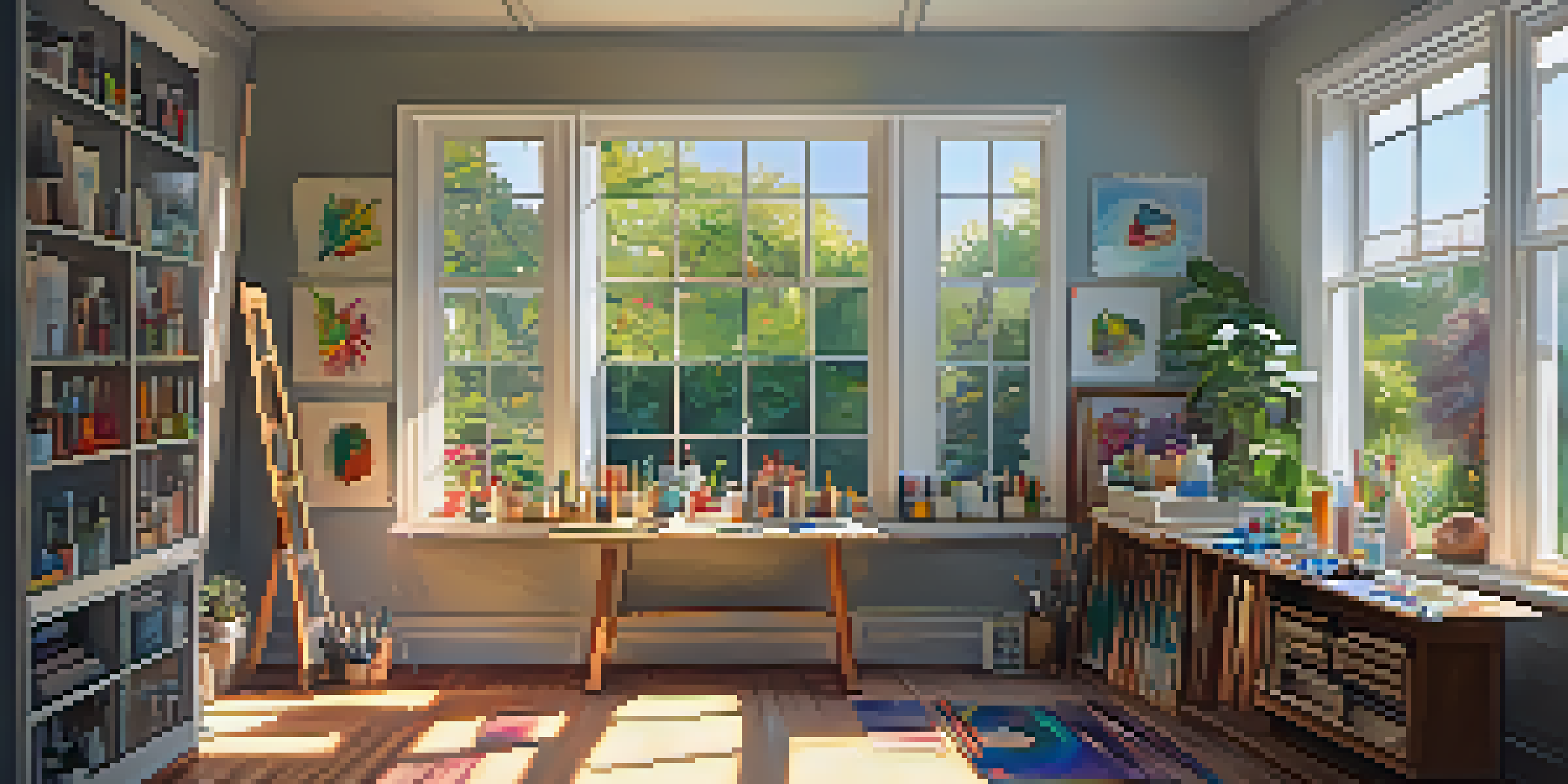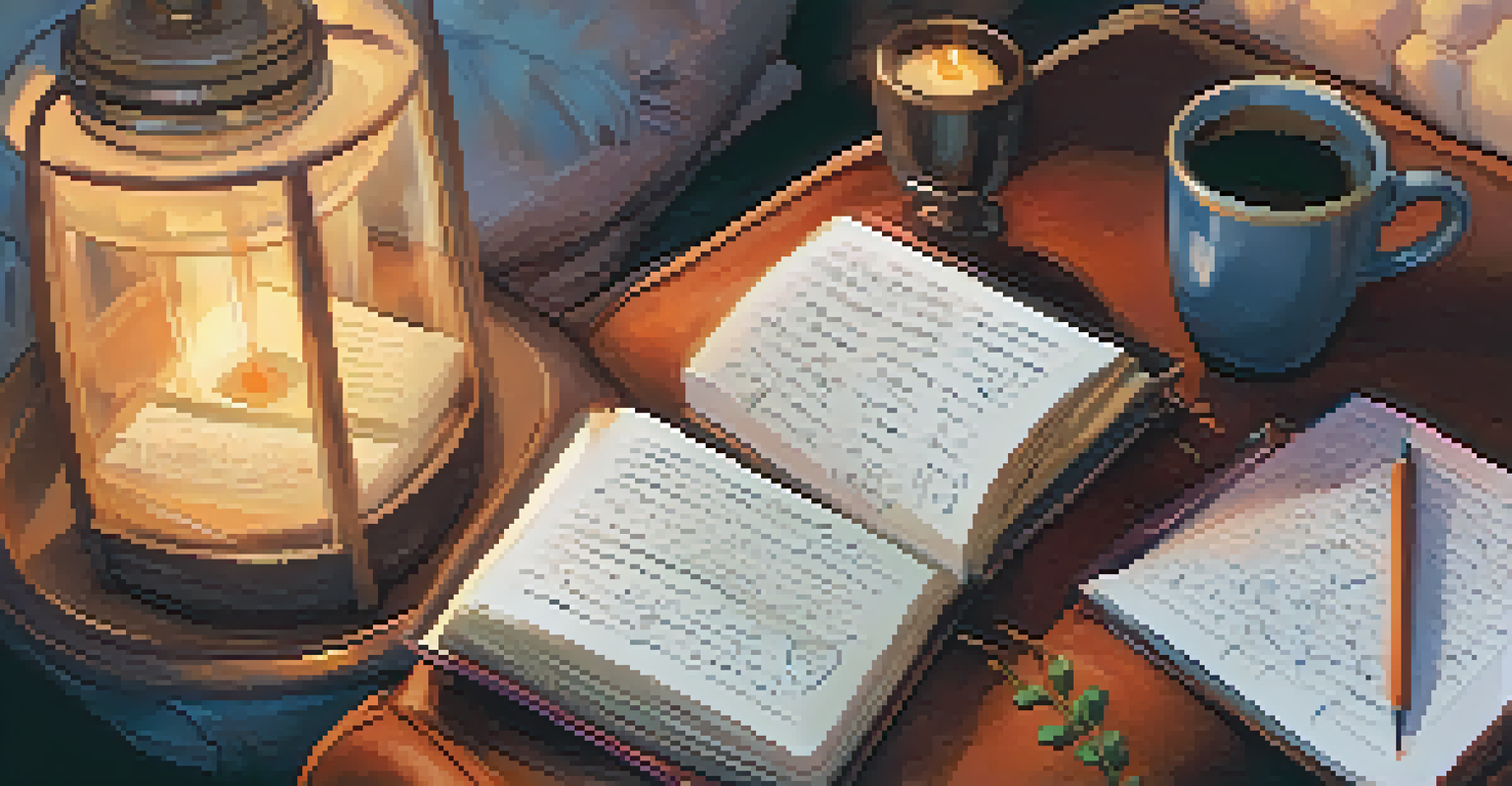The Connection Between Art and Emotional Intelligence

Understanding Emotional Intelligence and Its Importance
Emotional intelligence (EI) refers to our ability to recognize, understand, and manage our emotions and those of others. It's a crucial skill that influences our relationships, decision-making, and overall well-being. In a world where interpersonal skills are valued, EI has become essential for personal and professional success.
Art is the most beautiful of all lies.
Think of emotional intelligence as a compass that guides us through the complexities of human interactions. It allows us to navigate social situations with empathy and awareness. By being attuned to our feelings and those of others, we can foster deeper connections and more effective communication.
However, developing emotional intelligence is not always straightforward. It requires practice and reflection, which is where art comes into play. Engaging with art can help us enhance our emotional awareness and empathy, making it a valuable tool for nurturing EI.
Art as a Medium for Emotional Expression
Art serves as a powerful outlet for expressing emotions that might be difficult to articulate with words. Whether it's through painting, music, or dance, artists often channel their feelings into their work, creating a tangible reflection of their emotional landscape. This process not only helps the artist but also resonates with the audience, evoking shared emotions.

For instance, a poignant painting can evoke feelings of sadness or joy, prompting viewers to confront their own emotions. This shared experience allows individuals to recognize and validate their feelings, which is an essential step in developing emotional intelligence. Art encourages us to explore the emotional depths of ourselves and others, fostering empathy and understanding.
Emotional Intelligence Explained
Emotional intelligence is vital for navigating relationships and decision-making, enhancing both personal and professional success.
Additionally, participating in artistic activities, such as drawing or playing music, enables individuals to process their emotions in a constructive way. This not only enhances their emotional expression but also improves their ability to manage these feelings, making art an invaluable resource for emotional growth.
The Role of Empathy in Art Appreciation
Empathy is a cornerstone of emotional intelligence, allowing us to connect with others on a deeper level. When we engage with art, we are often invited to step into the artist's shoes and appreciate their perspective. This process enhances our ability to understand and relate to the emotions of others, a key component of EI.
The greatest art is to sit, to wait, and to listen.
For example, watching a heartfelt performance can evoke strong emotions, prompting us to reflect on our experiences and feelings. This connection fosters empathy, as we begin to comprehend the artist's emotional journey and the broader human experience. By immersing ourselves in art, we develop a greater appreciation for the diversity of emotions and stories that shape our world.
Moreover, discussing and interpreting art with others can further enhance our empathetic skills. Engaging in conversations about artistic expression allows us to share perspectives, deepening our understanding of differing emotional experiences and strengthening our emotional intelligence.
Art Therapy: A Practical Application of Art and EI
Art therapy is a therapeutic practice that combines the creative process of making art with psychological healing. It is used to help individuals explore their emotions, reduce anxiety, and improve their emotional well-being. By engaging in artistic activities, individuals can access and express feelings that may be difficult to articulate otherwise.
In art therapy, the focus is on the process rather than the final product. This approach encourages self-discovery and emotional exploration, allowing individuals to gain insights into their feelings and behaviors. For example, someone struggling with grief might create a piece that symbolizes their loss, providing a safe space to process their emotions.
Art Enhances Emotional Expression
Engaging with art allows individuals to express and process emotions, fostering empathy and emotional growth.
As a result, art therapy not only aids in emotional expression but also promotes emotional intelligence. Participants learn to identify and articulate their feelings, leading to a better understanding of themselves and their emotional responses in various situations.
Cultivating Emotional Intelligence Through Artistic Practices
Engaging in artistic practices can actively cultivate emotional intelligence in our daily lives. Whether it's journaling, painting, or playing an instrument, these creative outlets encourage self-reflection and emotional exploration. By dedicating time to these practices, we can develop a deeper understanding of our emotions and improve our EI.
For instance, journaling allows individuals to articulate their feelings, providing clarity and insight into their emotional states. This practice encourages mindfulness, enabling us to pause and reflect on our emotions instead of reacting impulsively. As we become more aware of our feelings, we can better manage our responses, enhancing our emotional intelligence.
Incorporating art into our routines can also foster connections with others. Group art classes or workshops provide opportunities for collaboration and communication, helping us practice empathy and social skills. Through these experiences, we can strengthen our emotional intelligence while enjoying the therapeutic benefits of creating art.
The Interconnectedness of Art, Emotion, and Intelligence
The relationship between art and emotional intelligence is a dynamic interplay that enriches our understanding of both. Art serves as a mirror reflecting our emotions, while emotional intelligence allows us to interpret and connect with these feelings. Together, they create a harmonious balance that enhances our personal growth and interpersonal relationships.
For example, experiencing art can evoke a range of emotions, from happiness to sorrow. Our ability to recognize and process these feelings is rooted in our emotional intelligence. As we engage with art, we not only explore our own emotional responses but also develop a greater appreciation for the emotional experiences of others.
Art Therapy Promotes Self-Discovery
Art therapy combines creativity with emotional exploration, helping individuals articulate feelings and improve emotional intelligence.
This interconnectedness underscores the importance of nurturing both artistic expression and emotional intelligence in our lives. By cultivating these aspects, we can enhance our well-being and foster more meaningful connections with those around us.
Conclusion: Embracing Art for Emotional Growth
In conclusion, the connection between art and emotional intelligence is profound and multifaceted. Art provides a unique avenue for emotional expression, empathy, and self-discovery, making it a vital tool for enhancing our emotional intelligence. By engaging with and creating art, we can foster our emotional growth and improve our interpersonal relationships.
As we navigate the complexities of our emotions, art becomes a companion that guides us through self-exploration and understanding. Whether we are creating or appreciating art, we can develop a deeper connection to our feelings and those of others, enriching our lives in the process.

Ultimately, embracing art in our daily lives can lead to greater emotional awareness and intelligence, empowering us to connect with ourselves and others more authentically. So, pick up a brush, listen to a symphony, or visit a gallery—your emotional intelligence will thank you!